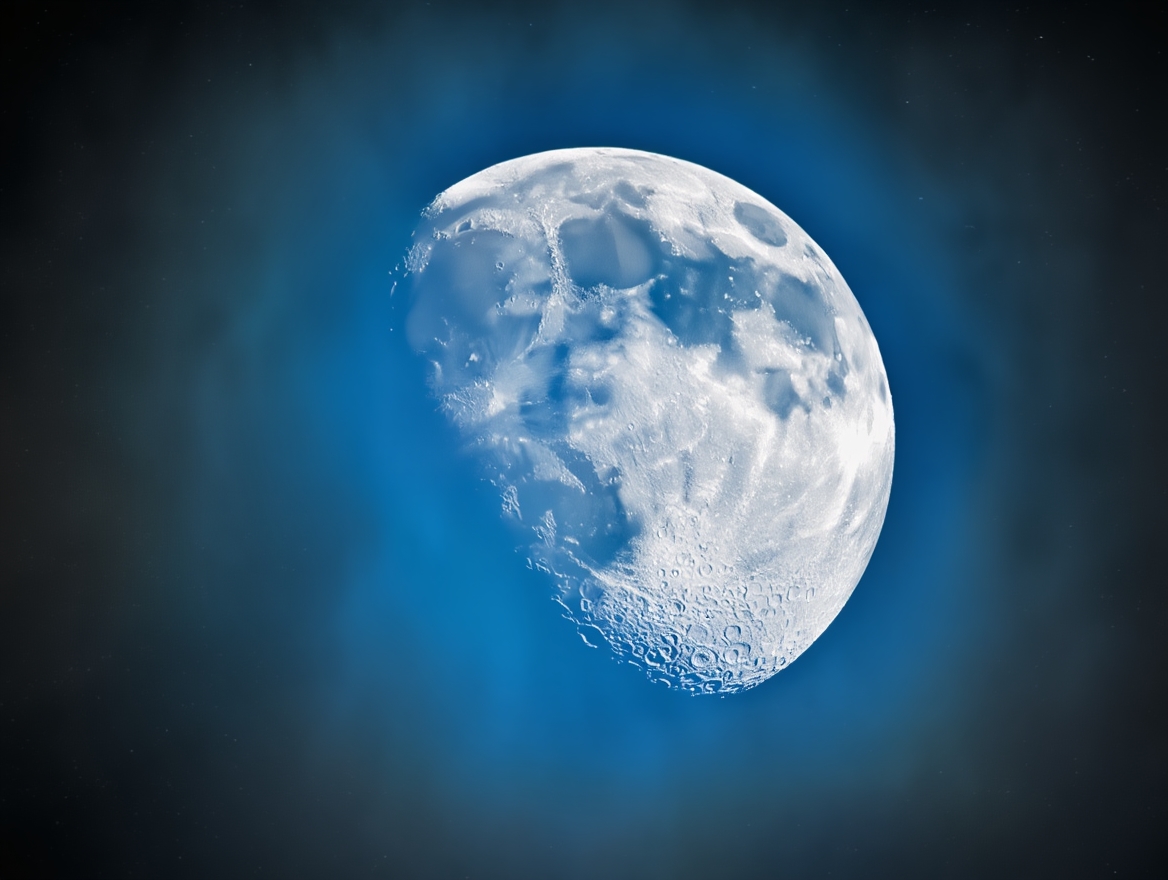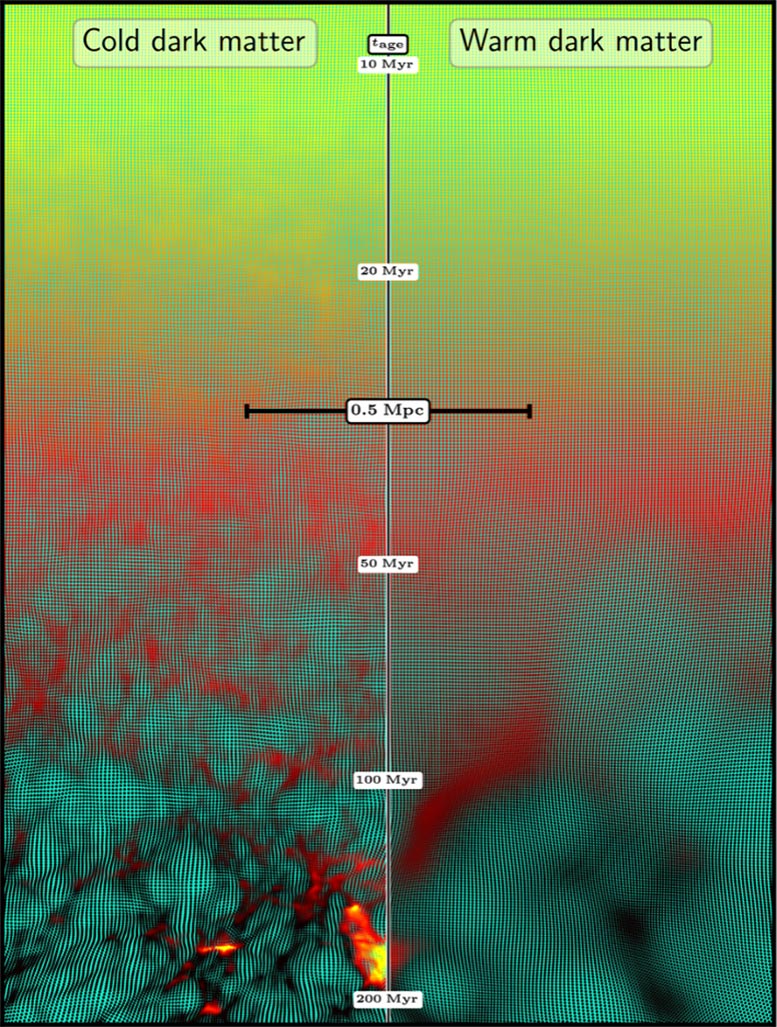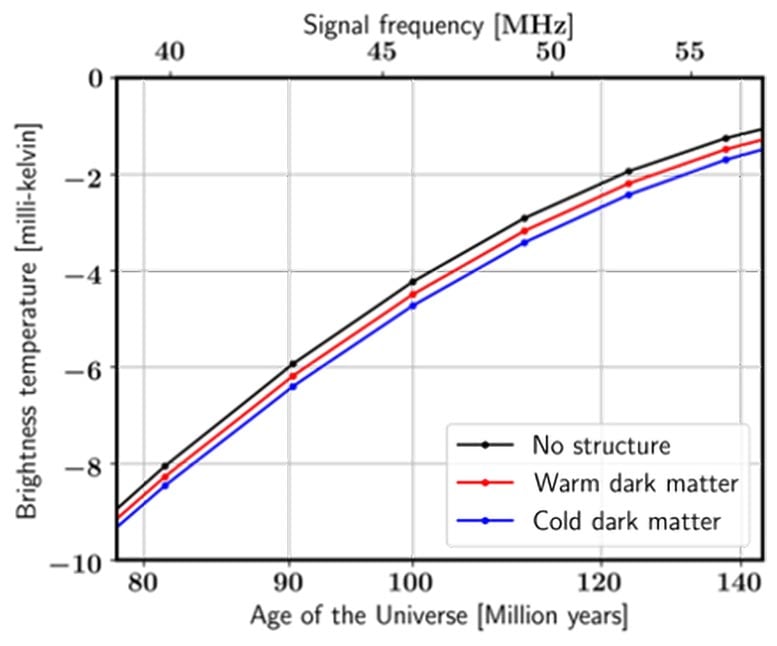🔭 Using the Moon to reveal dark matter
Follow us on Google News (click on ☆)

An international team has developed computer simulations to study how 21-centimeter radio waves emitted by neutral hydrogen during the first 100 million years of the Universe could betray the properties of dark matter. This invisible substance constitutes about 80% of all cosmic matter, but it does not interact with light, making it extremely difficult to observe directly. The researchers published their results in Nature Astronomy, demonstrating that the average strength of the radio signal depends heavily on the mass of dark matter particles.
If these particles are very light, less than 5% of the mass of an electron, dark matter is called "hot" and prevents the formation of small cosmic structures like dwarf galaxies. Conversely, heavier particles create "cold" dark matter that favors the development of small-scale structures. This difference manifests in how primordial gas clumped together during the Dark Ages.

Comparison of cold (left) and warm (right) dark matter scenarios showing the evolution of gaseous structures during the cosmic Dark Ages
Credit: Hyunbae Park
The simulations reveal how the gas gradually cooled during the expansion of the Universe while forming clusters via gravitational interaction with dark matter. In these dense regions, the gas compressed and heated, creating temperature and density variations that left their imprint in hydrogen's radio signal. The team modeled this signal and discovered that its average intensity differs significantly between cold and warm dark matter scenarios.
Detecting this subtle signal requires an exceptionally quiet radio environment, impossible to find on Earth due to human interference and the ionosphere that blocks low frequencies. The far side of the Moon instead offers an ideal refuge, protected from terrestrial disturbances. Several nations are currently developing lunar missions dedicated to radio astronomy, including the Japanese Tsukuyomi project, which plans to deploy radio antennas on our natural satellite in the coming decades.

Expected average hydrogen radio signal 100 million years after the Big Bang for different dark matter scenarios
Credit: Park et al.
The cosmic Dark Ages
The cosmic Dark Ages represent the period immediately following the Big Bang, before the formation of the first stars and galaxies. During this era, the Universe was filled with a fog of neutral hydrogen that emitted no visible light, hence the name Dark Ages.
This period lasted approximately 100 to 200 million years after the Big Bang, while the Universe continued its expansion and cooling. The primordial hydrogen gas was just beginning to organize under the influence of gravity, forming the first structures that would later become galaxies.
However, the neutral hydrogen from this era emitted a very specific radio radiation at 21 centimeters wavelength, corresponding to the transition between two energy levels of the hydrogen atom. This fossil radio signal constitutes our only direct observational window into this crucial period of cosmic history.
Studying these signals allows astronomers to travel back in time to the earliest moments of the Universe's structuring, long before the appearance of the first light sources.